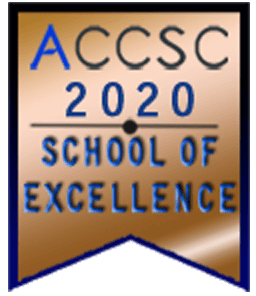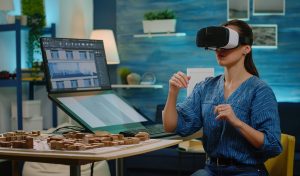Virtual reality (VR) technologies are improving architectural design by letting clients see their homes and businesses, change details, and experience them before construction. VR bridges the gap between imagination, plans, and reality. Contact ITI Technical College today for more information about virtual reality in architectural design.
VR Visualization, Walkthrough, And Benefits
Virtual reality is used in architectural design to allow clients, designers, architects, and engineers to visualize the design concept and walk through it before construction. VR and 3D modeling are superior ways to facilitate communication between stakeholders. Technologies help them experience and understand walkthroughs in houses and buildings at the concept stages. Seeing them on a screen within prepared models is a game changer.
Virtual and augmented reality technologies provide reality tours to identify a project’s strengths and deficiencies. At this point, clients and stakeholders can collaborate with different ideas after seeing a comprehensive project preview. Walkthroughs and 3D experiences are now widespread in architectural projects. Here’s how VR works in architecture:
- A 3D model is created using software like Blender or 3ds Max
- The model is exported to a program like Unreal Engine
- The artist sets up lighting and materials in Unreal Engine
- The user puts on a VR headset and explores the model
- The user can use controllers to interact with the model
Virtual reality provides superior benefits to its users. It can help architects understand how a space feels in human scale. It lets architects test complicated ideas and highlight important components of a project. VR helps them communicate ideas quickly, intuitively, and in real-time. VR is a marvel of our age for architectural design and construction.
 Virtual Reality In Sustainable Architectural Design
Virtual Reality In Sustainable Architectural Design
Virtual reality is used to study sustainability in houses and buildings to help determine their impact on the environment. Modeling and analysis programs are part of this effort to observe how we can apply sustainability practices. We can experience VR simulations to observe:
- Energy consumption
- Daylight effects
- Ventilation
- Thermal comfort
- Buildings’ performances
Without virtual reality, details about material selection, lighting effects, ventilation, and thermal performance in energy studies may be overlooked. VR helps optimize these performances by observing the effects of weather conditions on a house or building. Architects and engineers can understand potential issues, see a building’s durability, estimate its lifespan, and plan maintenance schedules.
The role of VR in promoting sustainability in construction, renovation, and demolition is powerful. It serves as a valuable tool in green transitioning by allowing design and construction teams to design and optimize housing and buildings while minimizing waste and reducing energy consumption.
|
“Virtual reality (VR) technologies are improving architectural design by letting clients see their homes and businesses, change details, and experience them before construction.” |
Virtual Reality In Architectural Design: Easy Accessibility
 Virtual reality technologies have altered our approach to architectural design. With them, we can easily access and grasp projects before construction begins. VR allows architects to entertain clients from anywhere around the world through appropriate headsets. Clients, engineers, and construction managers can watch immersive, 360-degree virtual reality videos.
Virtual reality technologies have altered our approach to architectural design. With them, we can easily access and grasp projects before construction begins. VR allows architects to entertain clients from anywhere around the world through appropriate headsets. Clients, engineers, and construction managers can watch immersive, 360-degree virtual reality videos.
VR technology can be used by people with disabilities who cannot visit or have a difficult time visiting a project site. Virtual reality technologies can help an architect understand the needs of different users, such as the elderly or those who don’t speak English. Because VR is easily accessible and understandable, professionals can cultivate an inclusive environment where we can interact with the project space without technical jargon.
Why We Like The Virtual Reality Experience
Using VR is exciting and provides superior benefits compared to traditional design approaches. Many two-dimensional sketches and plans are insufficient because they lack depth and understanding. These benefits should appeal to anyone exploring architectural designs.
- Many real estate professionals are now using VR and other walkthrough technologies
- It gives clients an exciting and memorable experience of a home or structure
- VR allows clients to understand the structure’s design better
- Clients can recognize and appreciate its features and details
- Clients gain insights into a design’s layout and materials
Forty percent of professionals in Europe rely on VR for architectural designs. VR technology is also used for niches such as the preservation of cultural heritage and national historic sites. This technology provides improved opportunities to receive and incorporate feedback from clients and other stakeholders. Clients like VR because it helps them get a feel for their projects before they put any money down. This limits their liability in short-term market fluctuations.
Architects also like VR because it saves a lot of time and gives cost-saving benefits. Real-time feedback lets them consider the impact it will have on the form and functionality of the design space. It helps ensure the design meets the clients’ expectations. Architects can also reduce execution costs and avoid damage control processes in the construction stages of projects.
Virtual reality technologies in architectural design and construction are revolutionizing these industries for the better. If your career goal is working in drafting and design technology, explore what our Drafting & Design Technology (AOS) Associate in Occupational Studies Degree has to offer you.
For more information about graduation rates, the median debt of students who completed the program, and other important information, please visit our website: https://iticollege.edu/disclosures/





